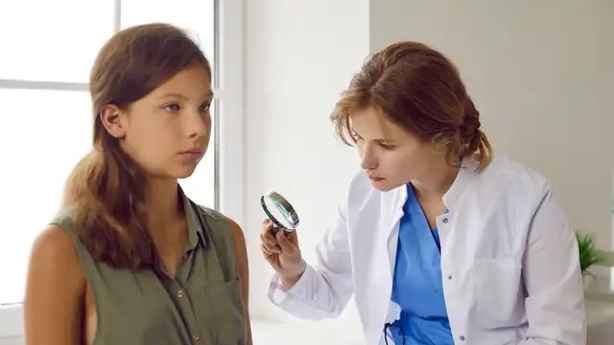Kevin Jonas has urged his fans to get their moles checked after he had a cancerous mole removed from his face this week.
The 36-year-old, who is one third of the pop band Jonas Brothers alongside brothers Nick and Joe, posted a video of himself after the surgery to his almost five million followers on Instagram.
"So today I am getting a basal cell carcinoma removed from my head," he said in the video.
Referencing the mole, he said: "That is an actual little skin cancer guy that just started to grow, and now I have to get surgery to remove it. So, here we go."
We need your consent to load this Instagram contentWe use Instagram to manage extra content that can set cookies on your device and collect data about your activity. Please review their details and accept them to load the content.Manage Preferences
Basal cell carcinoma (BCC) is a type of non-melanoma skin cancer that starts in the top layer of skin and can often be easily treated.
This post provoked thousands of heartfelt comments and well wishes from fans on social media.
The Skin Cancer Foundation’s official account commented: "So sorry to hear about your BCC, Kevin. Thank you for raising awareness. Early detection is key. Wishing you the best on your recovery journey."
Skin cancer can be a scary topic to approach, so we have spoken to some skin experts to get their advice on what signs to look out for…
Why is it important to get your moles checked?
The HSE defines moles as " small, coloured spots on the skin caused by groups of cells called melanocytes" and states that most people have them and they are "usually nothing to worry about unless they change size, shape or colour".
It's normal for:
- babies to be born with moles
- new moles to appear up to your 30s - especially in children and teenagers
- moles to fade or disappear as you get older
- moles to get slightly darker during pregnancy
Visit your GP or a dermatologist if a mole changes in size, shape or colour because it could be a sign of melanoma, a type of skin cancer.
Dr Sajjad Rajpar says: "Regular checks of moles are crucial because early detection of skin cancer significantly improves the chances of successful treatment.
"A professional can identify moles that might be problematic before they develop into more severe conditions.
"Early detection is especially important for melanoma, a dangerous form of skin cancer that can spread to other parts of the body if not caught early.
"Skin cancer can affect individuals at any age, making it important for everyone, including young people, to be vigilant."

What warning signs should you look out for?
Many of the experts we spoke to encouraged the public to employ the following ABCDE checklist when checking their moles.
A – asymmetry – one half of the mole looks different to the other
B – border irregularity – the edges are uneven or jagged
C – colour variability – the mole is a mixture of different colours
D – diameter – the mole is bigger than 6mm across
E – evolution – the mole has changed in size, shape or colour
Dr Naveen Puri added: "There are a few other important things to look out for like itching, bleeding or crusting.
"If a mole starts to bleed and you haven’t injured it then you should get it checked by your doctor as soon as you can."
We need your consent to load this Instagram contentWe use Instagram to manage extra content that can set cookies on your device and collect data about your activity. Please review their details and accept them to load the content.Manage Preferences
Ugly Duckling Sign
Dr Ross Perry, founder of Cosmedics Skin Clinics, urged the public to check their whole bodies for suspicious moles every two to three months.
He said: "A general rule is to look for the ‘Ugly Duckling Sign’. Normal moles usually look fairly similar to each other, while dangerous ones look noticeably different.
"If there is a mole that just doesn’t look or behave the same as the others, then that could be a cause for concern and it’s worth getting it checked out.
"A malignant melanoma will appear dark black often flat and irregular edge, these are very dangerous with a high risk of spreading, whereas squamous cell carcinoma tends to be a reddish lump on the skin that can bleed and ulcerate.
"Basal cell carcinoma is either a flat red patch of skin that bleeds or is painful but also a reddish lump."

What is the treatment for moles?
If your GP thinks it's melanoma, they will refer you to a specialist in hospital and you will get an urgent appointment. The main treatment for melanoma is surgery to remove the mole.
How do you prevent cancerous moles?
The general consensus from the experts we spoke to was to take extra care of your skin in the sun by covering up and applying sun cream to exposed areas.
According the the HSE, melanoma is not always preventable, but you can reduce your chances of developing it by avoiding getting sunburnt.
You can also help protect yourself from the sun by:
- covering up with a hat, clothing and sunglasses
- staying in the shade, especially between 11am and 3pm
- putting sunscreen on any skin that is not covered
- do not use sunbeds, sunlamps or sunbathe.
Smoking can also increase the risk of developing various types of cancer, says Dr Rajpar, so should be avoided.
Dr Perry also advised people to avoid tanning beds salons as they use UV light.
